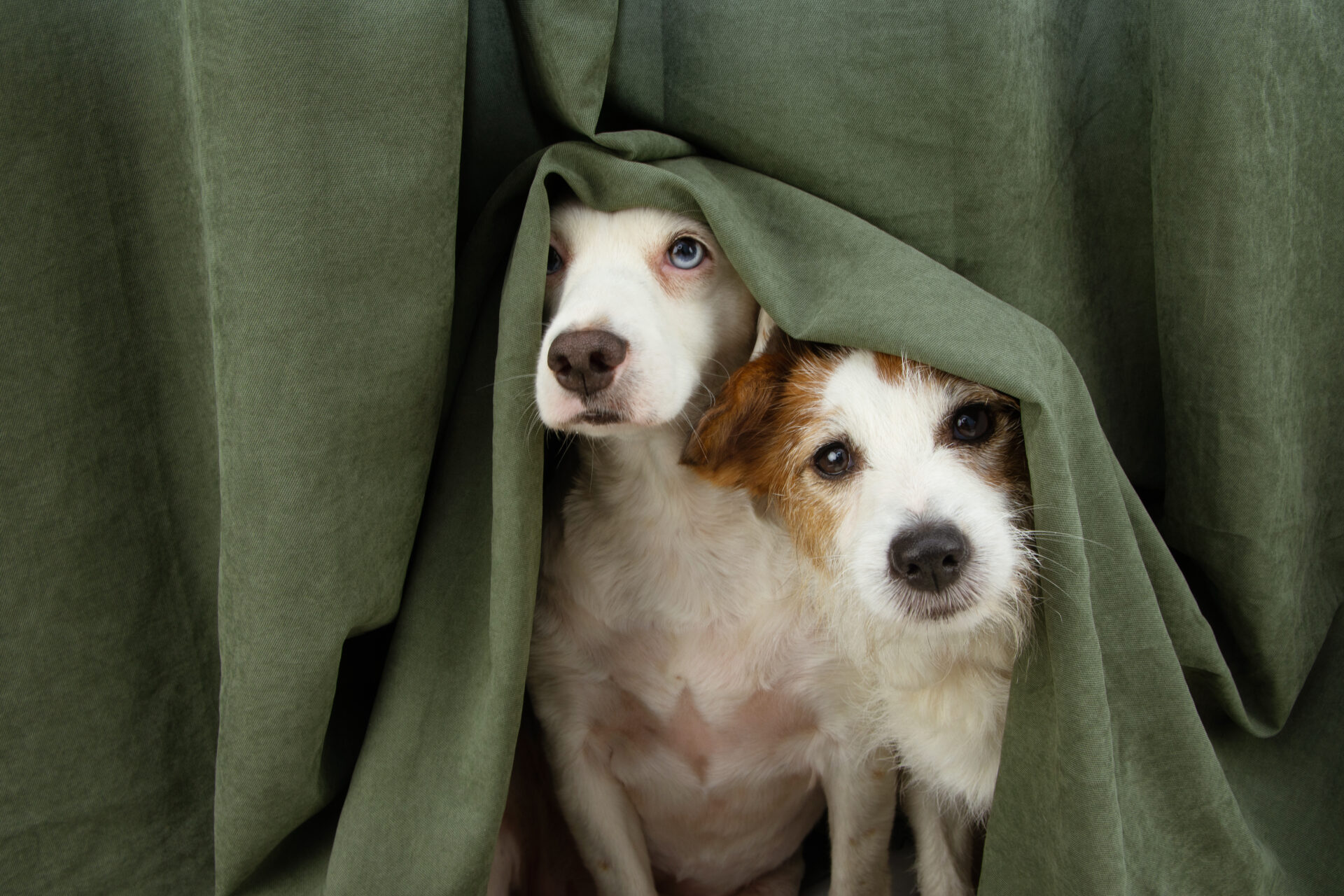Firework season is here again. If you have a fearful pet, this is a challenging time. Seeing your pet suffering from severe anxiety and not knowing what to do is incredibly distressing. Thankfully, help is out there! It can take a little thinking outside the box, but with a bit of planning, you can make things a whole lot better for both of you.
To create a plan to tackle firework fear head-on, you must start early and consider every option in your anti-anxiety toolbox. You’ll need to use multiple strategies simultaneously, as there isn’t one simple fix. Here are our top 5 anxiety-busting methods to consider:
-
Make changes to their environment
Fireworks produce several sensory triggers that can create a fear response. Loud sounds are the biggest issue for many pets. However, your pet will soon associate other sensory stimuli that induce the same response: flashes of light and smells in particular. Whatever you can do to increase your pet’s security and block out these cues will go a long way to alleviating their fears. Top suggestions include:
- Moving all small pets indoors and covering enclosures of pets that cannot be moved with blackout fabrics and soundproofing materials – ensure there is still plenty of ventilation, though.
- Keeping cats indoors after dark. Cats that are spooked by fireworks can get into all sorts of scrapes.
- Creating a den or safe space such as a covered crate with soft, warm bedding, clothing carrying your scent, favourite toys and treats. Include water, food, and a litter tray if you have a cat.
- Blocking out noise and lights with other sensory stimuli, such as thick curtains, overhead lighting, and the TV (which has the benefit of changing lights and sound).
All these strategies should be started well in advance (maybe every 2-3 nights from early October) when there is no hint of a firework. That way, you reduce the chance of your pet coupling these changes to the prospect of fireworks, which might intensify their fear response.
-
Desensitising your pet
In simple terms, your dog can be trained to make more positive associations with a particular sensory stimulus. Eventually, they shouldn’t feel fearful when exposed to this sensory trigger. The secret is to follow a structured course, so you do not do too much too soon, undoing all your hard work. Sound therapy can be excellent, even in young dogs, before they show any signs of noise phobia. Many helpful online resources can guide you through the process but ensure you start your desensitisation training well before firework season – ideally, this wants to start in September, or even August, at the latest.
-
Keep your pet company
Pets feel safest with their human family nearby. If you can’t be home, find a friend familiar with your pet to hang out with them. Don’t fuss them any more than usual, or you may subconsciously deliver cues that something is up. Staying calm is crucial. If you are worried, they will know. There is compelling evidence that dogs and horses can detect fear chemicals in human sweat, affecting their behaviour. So, you need to practise your evening routine and focus on your inner Zen! Get the popcorn, stick a movie on, and pretend this is just another cosy night in.
-
Try calming products
A superb selection of calming products can support all the environmental changes you have made. Pheromone products such as Feliway and Adaptil send soothing and reassuring messages to your cat or dog. These products have been shown to reduce signs of stress. They are available in many forms, including diffusers, sprays, collars and more. Other calming supplements, such as Zylkene and Nutracalm, may have a calming effect on some pets and can be valuable as part of a multi-pronged approach. Another exciting product is the Thundershirt. These snug-fitting jackets provide gentle, continuous pressure to your pet’s body, much like weighted blankets used by people with anxiety issues. When you try these products, it’s essential to follow instructions and start several weeks before they are needed.
-
Speak to your vet
Sometimes, it doesn’t matter what you do; your pet’s fear is so intense that you need additional help. If this is the case, you must speak to your vet as soon as possible. Several anti-anxiety medications can have a calming and sometimes mild sedative effect, providing significant relief to pets. The aim of these medications is not just to suppress anxiety coping behaviours but to help remove the anxiety itself. Therefore, these medications should be used alongside other measures to reduce your pet’s physical and psychological fear response. It is recommended that anti-anxiety drugs are trialled at a time when your pet is unlikely to encounter any stress. That way, you can be sure that your pet is receiving a suitable dose and that there are no undesirable side effects.
Start planning today
Don’t wait until firework night to put your plan in place. Sit down with the family and devise the best strategy for you and your pet. Be savvy and get together all the resources you need to make the festival season a success – check out our product range with free delivery to mainland UK for orders over £29. And check out what’s on the TV so that you have something fun to watch snuggled up on the sofa with your pet.
References
Calvi, E., Quassolo, U., Massaia, M., Scandurra, A., D’Aniello, B., D’Amelio, P. (2020). The scent of emotions: A systematic review of human intra- and interspecific chemical communication of emotions. Brain and Behaviour. 10(5), e01585. Accessed 13 October 2022.
https://thundershirt.com/ Accessed 13 October 2022.
https://www.dogstrust.org.uk/dog-advice/understanding-your-dog/sound-therapy-for-pets Accessed 13 October 2022.
https://www.feliway.com/uk Accessed 13 October 2022.
https://www.adaptil.com/uk/Products/ADAPTIL-comforting-messages Accessed 13 October 2022.
https://www.nutravet.co.uk/nutracalm/ Accessed 13 October 2022.
https://zylkenepet.co.uk/ Accessed 13 October 2022.
Landsberg, G.M., Beck, A., Lopez, A., Deniaud, M., Araujo, J.A., Milgram, N.W. (2015). Dog-appeasing pheromone collars reduce sound-induced fear and anxiety in beagle dogs: a placebo-controlled study. Veterinary Record 177(10), 260. Accessed 13 October 2022.
Riemer, S. (2019). Not a one-way road-Severity, progression and prevention of firework fears in dogs. PLoS One. 14(9), e0218150. Accessed 13 October 2022.





